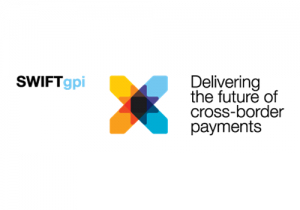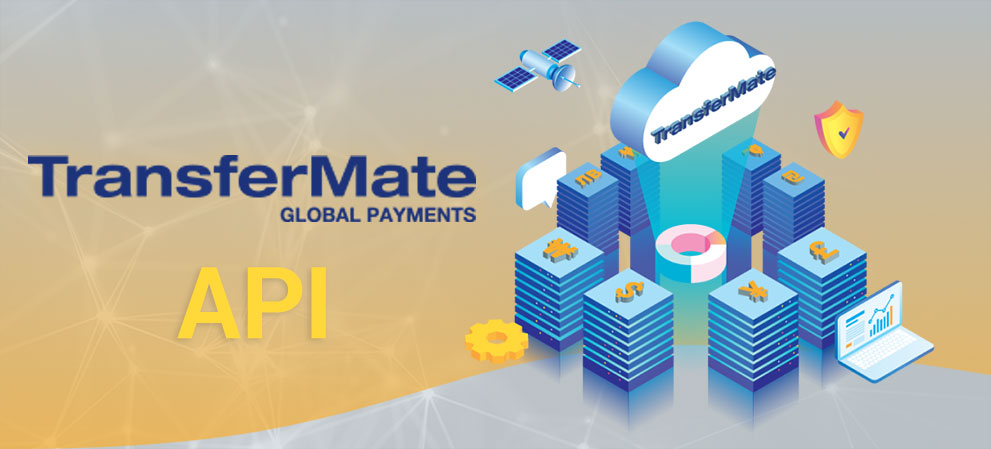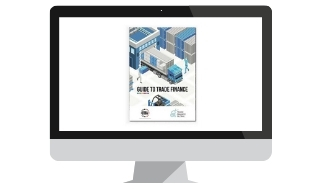TFG heard Judd Holroyde, Head of Global Product Management, Wells Fargo. We talked about the changing payments landscape, about SWIFT and SWIFT Gpi and how the FinTech creativity can be used as a customer value proposition messenger.
Featuring: Judd Holroyde, Head of Global Product Management, Wells Fargo
Host: Deepesh Patel, Editor, Trade Finance Global

My name is Judd Holroyde. I work for Wells Fargo. I’m the head of Global Product Management. So we look after most of the International space functioning for the bank.
And it is one of the largest commercial banks in America and globally. What keeps the corporate treasure is up at night?
You know, we’re just in a marketplace of rapid change. Whether its economic change, whether it changes with trade partners and geopolitical challenges. I think what most corporate treasures are looking for is stability, control and visibility. And so we really focus on how do we bring that certainty to the uncertain and a lot of that just has to do with being diligent and disciplined and consistent. Right, especially in functions like payments, like information services, where companies no matter how volatile the marketplace is, they’re really relying on that consistency of information or transaction handling.
So you look after the trade, treasury and payments and cross border, from a product perspective. Are these features interlinked or seen as an individual from your customer perspective and also from the business.
You know, I think all the way from infrastructure through a product to the customer, we’re really focused on trying to interlink as much as we can. I think there are verticals where there’s a level of specificity in differentiation, where we do want independence, certainly, but when we look at things like payments, for example, right, we look at high value, low value real-time, all of that in sort of a contiguous form to make sure that the various use cases for a customer right so you know, paying a rebate to a consumer for paying, you know, a rideshare driver who wants on-demand money on the back of giving somebody a ride is a very different use case than perhaps a corporate, that’s pre-scheduling payroll payments. But we have to look at them all together, whether they’re a domestic or cross border. And that’s admittedly challenging for a big bank. I think we always have opportunities to improve the customer experience. And we’re committed to doing that and we’ve got to take a holistic view to do that.
And do you think the big bodies such as SWIFT with many of their products are innovating fast enough to also address that customer challenge?

So I mean, that’s a really good question, right? I think sometimes you hear people refer to SWIFT, as it is not moving fast enough. I actually think a lot of what encumbers SWIFT is the traditions of banking and correspondent banking models and the things that have been around, you know, even before the 70s you know, if you look at Swift’s announcement this week around the global payment instant service. I think that is a big and important step forward because the industry is recognising that consumers and businesses want more access to cross border near real-time payments to compete more actively with the third parties. However, one of the realities is, that you really need a network like SWIFT that has the scale to provide that interconnectivity between something like SWIFT GPI in a local real-time scheme. So we’re very, very bullish on sort of SWIFT innovative focus. You know, I think the banks themselves we all push ourselves to innovate, right? I mean, most of us are big institutions. It takes time, but I really appreciate the partnership with SWIFT. I really think that they’ve got sort of an edge view on the future. We just have to now collectively really push forward and execute against it.
So Judd, let’s talk about trade. More specifically trade wars and volatility in the market. And I think, generally, we’ve seen trade flows stagnate or even slow down. But actually a lot of reports that we’re seeing, show that the revenues from trade finance have continued to go up. Is this your view? And what are you seeing from the bank’s perspective?
So I mean, there’s always going to be periods of sort of trade wars and geopolitical challenges, right. Personally, I think trade is going to continue with a good level of momentum. I think the makeup of trade is what’s changing. So while you still see the growth, it’s some of the maybe more traditional historic mechanisms for trade that have changed. And part of that’s just the different dynamics in modern culture. So for example, they’re way more person to person connection, through social media. So whether you consider that a trade function, but the movement of money tends to follow those connections and the more digital connections there are, the more cross border transactions there are naturally because I’ve got more friends overseas, I may be exchanging money or products or what have you with them. So I mean, I think the globalisation that’s driven by the digital reality of the world today will keep actually trade moving in a productive direction, albeit a less traditional definition of trade.
Okay, great. So yes, here we are as SIBOS we’ve seen many, many innovations in and around AI, machine learning, robotics, it would be good to hear some of the latest FinTech inventions coming out of Wells Fargo. More specifically from the corporate side of the business. Can you share anything with us?

Sure, I mean, I’ll give you a real example. We recently did a new product with an Irish company called TransferMate, really looking at how do we help our middle market corporates get better efficiency and value in cross border trade payments basically. So one of the challenges that our customers face is when they’re invoicing in US dollars to a partner in a non-US dollar market. Those transactions as they’re facilitated cross border often have lifting fees and the traditional makeup of correspondent banking and wire fees tend to be expensive. And so what we did with TransferMate, leveraging their market coverage of about 55 markets was fabricate a much more local experience for the payer, right where they’re offered a very competitive FX rate. TransferMate is then bringing that transaction into their network in partnership with Wells Fargo and moving it to our customer, right, the biller in a much more efficient form, but most importantly, it fits with the invoice so the invoice the amount always matches the principle that comes back that allows a perfect reconcilement it also the service also because it’s using local payment models instead of cross border payment models reduces the fees on both sides by between 50 and 75%. So the innovation with FinTech to us is really about the customer value. And we always want to be able to measure it. And this was a great example of how you really, really can use the creativity that a FinTech brings to the market and apply it in real terms to a customer value proposition messenger.
Is the bank making less real revenue there as a result of those reduced FX fees?
I mean, I guess you could look at it that way. Right? Are we giving something up? Yeah, we’re giving something up. But what we’re returning is more value to the customer, which is what matters and what we really care about.
Great. Well, Judd, thank you very much for joining us today on Trade Finance Talks. Have a great rest of your week at SIBOS.
Appreciate it. Thank you.
Want to find out more about digital trends in the alternative and receivables finance? TFG has partnered up with BCR at both their Alternative & Receivables Finance Forum and Masterclass in November.


 Australia
Australia Hong Kong
Hong Kong Japan
Japan Singapore
Singapore United Arab Emirates
United Arab Emirates United States
United States France
France Germany
Germany Ireland
Ireland Netherlands
Netherlands United Kingdom
United Kingdom










Comments are closed.